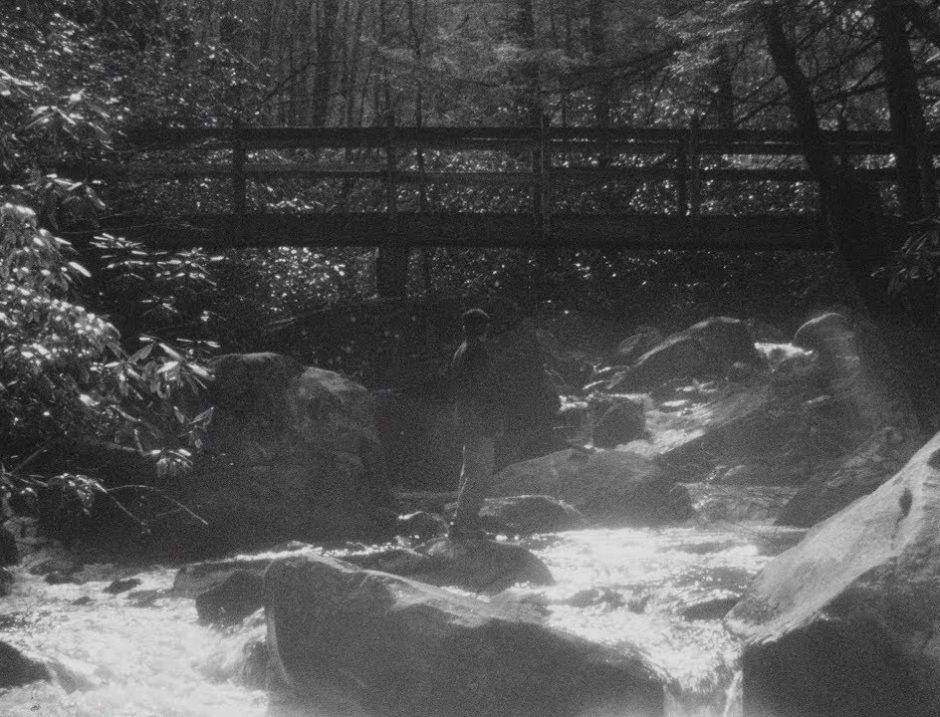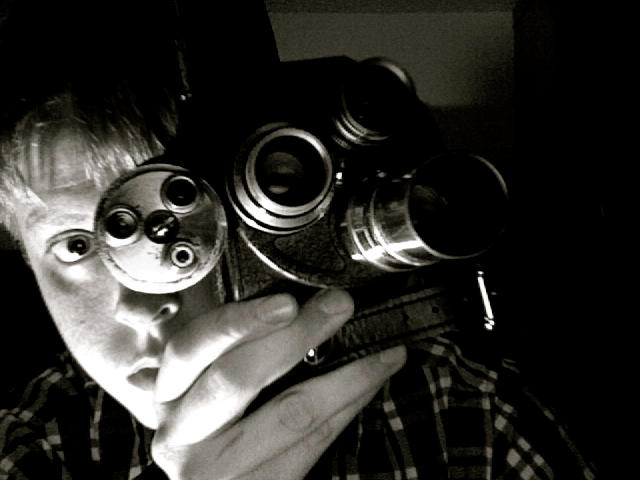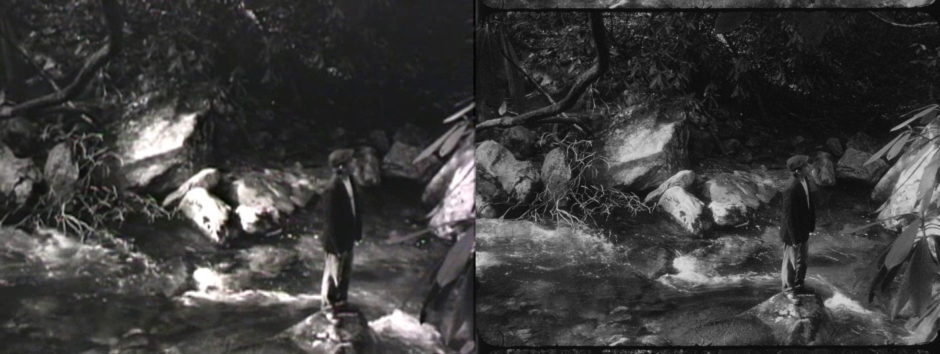
2007, March: my best friend Mike and I trudge up a North Carolina mountain to a long narrow bridge over a rushing mountain stream. I’m carrying my newly purchased 1960’s Bell and Howell Filmo 70 loaded with 16mm black and white reversal film. It’s really heavy and I’m panting. We find a stone in the dangerously fast flowing stream for Mike to stand on, I wedge the heavy tank of a camera and flimsy tripod into a bolder on the shore, meter the shot with a Super 8 camera–I don’t own a light meter–set the lens’s focus and aperture, crank the camera’s spring motor drive and shout action! Almost 12 years later I’m finally releasing the short film we shot that day in the quality it was meant to be seen in.

16mm film is actually a high resolution film, we’re just so used to seeing it in poor standard definition scans that we think of it as lo-fi. For decades it was a mainstay of college film programs and I was lucky enough to attend a film school that still required students to shoot with it. This requirement actually made sense. Back in 2007 HD cameras were new and expensive, and 16mm was the closest thing we could shoot to approach the resolution of the 35mm motion picture films of Hollywood. In my Freshman year I was handed this strange tank of a camera with a three lens turret on the front, taught to thread film through it and how to crank it for maximum shot length and sent outside to practice. Later, watching the flickering silver images I had captured I fell in love. To this day I still prefer shooting on film both for stills and short films, I just can only afford it occasionally.
I wasn’t allowed to use my school’s Bell and Howell Filmos for non-class work, so I went to ebay and purchased the exact same camera. When we placed our order for film for class projects that spring I added two more rolls to my list, and managed to convince my teacher Mr. Ramsey to scan them for me. For Freshman projects my school used a pretty primitive SD scanner, so when I assembled the film digitally, it was far from the resolution it could have been. In the image below you can see the difference.

I was on top of the world! I had managed to buck the system and make my own film outside of my school’s strict creative parameters! I uploaded the film to my brand new Vimeo account and later to YouTube and promoted it to death for the next couple of years, but I was always kind of sad that the image quality looked so poor. Finally this year I bit the bullet, dusted off the original film cans and sent them in to Filmmedia.org for a high quality 4K scan. What I got back was a true revelation: this is why we still shoot film–it’s hauntingly beautiful.
